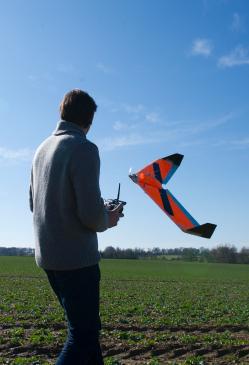A new technology is value neutral, but society responds to the first applications that get attention—think of nuclear bombs as the first instance of nuclear technology. Unfortunately, a bad first impression can make it difficult for new technologies to reach their potential when it comes to incorporating them into our daily lives. The excitement around 3-D printing and anxiety around drones are just the latest examples of the two paths here.
When 3-D printers first hit the mainstream news, the press and blogosphere regaled us with tales of how anyone would be able to make just about anything in the comforts of their own home. Jay Leno discussed 3-D printing spare parts for his rare-car collection. A 2010 article from the New York Times describing a company promising to print prosthetic limbs would later evolve into the recent reality of 3-D printed organs.
When people realized that printing “anything” might include 3-D printed guns, both the government and the public had a mini panic: The State Department rushed to restrict the publication of open-source design files for the gun, and 3-D printer manufacturer Stratsys hired a team to take back the equipment it had leased to the people designing the weapons. Rep. Steve Israel, D-N.Y., introduced a bill banning 3-D printed gun magazines and firearms that could evade metal detectors. More recently, a Danish company has created software that could be embedded in 3-D printers to prevent them from printing gun components, although this may be more about reducing printer companies’ liability than effectively stopping a determined weapons maker.
But no one called for banning 3-D printers—they just wanted to create a framework for dealing with one particularly troubling application. Even after the 3-D printed gun first caused widespread alarm in late 2012, President Obama praised the technology in his 2013 State of the Union speech, saying, “A once-shuttered warehouse is now a state-of-the art lab where new workers are mastering the 3-D printing that has the potential to revolutionize the way we make almost everything.”
This stands in stark contrast to the surge of efforts to restrict the use of unmanned aerial systems, commonly referred to as drones. Most people’s first exposure to drones has come from stories of targeted strikes in Pakistan and surveillance of insurgents in Iraq. In the public eye, they have become a symbol of the war on terror and a threat to privacy. And because of this association, there has been an increase in calls for restrictions not just on particular applications for drones, but any use of the technology. The most extreme example of this was Oregon’s Senate Bill 71, which would have made it illegal to even own a device capable of capturing aerial imagery.
These restrictions on the civilian use of drones keep us from taking full advantage of their many socially beneficial applications. Community organizations, artists, and entrepreneurs are testing out new uses for drones completely different from how they have historically been applied on the battlefield. (I founded a drone user group in Washington, D.C., for exactly this reason.) The most recent issue of Successful Farming magazine features an article on its cover titled “Drones: Look overhead for the latest tool in precision agriculture”—but using UAVs for this or any other commercial application will remain illegal for at least two more years under FAA regulation. With more restrictive legislation passed or being proposed in many states and cities, the wait may be even longer. Of course, other countries are not standing still in this regard. In Japan more than 90 percent of aerial crop spraying is already done with unmanned aerial systems. In America, meanwhile, it’s illegal for Americans to even test these drones, which are lower cost and more environmentally friendly than traditional manned systems.
The first uses of a technology often do not end up being the most common. The people who originally developed GPS to guide military equipment around a battlefield could never have guessed that their children would be using that same technology on their smartphones to find restaurants in a new city or to find a date. By focusing our debates about privacy on restricting a particular technology, we may end up with a system that looks as antiquated as attempts in the 1800s to prevent aerial bombing by signing a convention focused on the potential dangers posed by balloons. Once we understand and accept our inability to predict all the ways a new technology might be used, we can focus on creating laws, regulations, and social norms that effectively manage what we think is safe and acceptable in a technology neutral manner while still embracing the full potential of human creativity.
